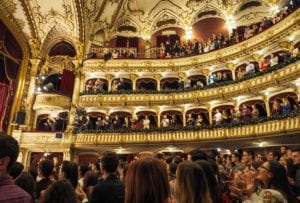A pattern with business journals and thought-leaders recently points to the importance of Customer Experience for success in any business. This involves making the effort to develop a deep understanding of all the interactions a prospect or customer has with your brand. These are all moments of truth, a phrase coined by Jan Carlzon, former CEO of Scandinavian Air Services (SAS), and represent an opportunity to either positively or negatively impact the feelings people have about you and your brand. Carlzon and others recognized that by clarifying all the moments of truth, a firm can identify potential friction points and opportunities to improve or differentiate.
I am reminded of a book from the late 1990s called The Experience Economy. In this book the authors suggest that we are now entering a 4th economic age, namely the experience age. This age follows three previous economic periods; the agrarian age, then product, then the services age. In the experience age customers want, and will pay for, the experience of interacting with your brand which often goes beyond just the product or service itself.
Take Starbucks as an example. We all agree that there are cheaper options for coffee, and even cheaper options for over-the-counter coffee. But for millions of people that choose Starbucks, they are buying more than what’s in the cup. Starbucks has designed an experience which includes almost infinite beverage customization combinations, lively and comfortable locations, ease-of-use payment applications, preorder mechanisms, friendly and well-trained staff, and various other details that contribute to the overall experience.
Thinking of your offering as a performance
To further bring home the point, the authors of The Experience Economy use the comparison tolive stage performances to provide a model for thinking about the way we interact with our prospects and customers. In live performing arts, the experience is literally everything, and every person involved from the actors, musicians, directors and producers, to the ticket sellers and ushers, have an impact on the experience. Even the designers and constructors of the theatre influence the overall experience, and whether people would say the performance was good or bad.
We also know that in performing arts the individuals who are “customer facing” do things quite differently than most employees in other organizations. They audition for the roles and work extremely hard to rehearse all the words, movements, melodies and timings. All this happens before the customer ever comes to experience the show, and the practice can often take months prior to the actual performance.
They also have coaches. Directors, producers and conductors observe the actors and musicians, and provide constant feedback until the performance comes together in perfect harmony.
A final characteristic of performing arts is that rarely, if ever, is a show cancelled or disrupted in some way. The performers know that “the show must go on”, recognizing they probably only have one chance to impress that group of guests.
What would be different if you shifted your thinking from offering products or services to offering performances? Would your employees rehearse more, get more coaching, do more careful planning from the customer point-of-view? Would you start calling your customers “guests” or “the audience”? And maybe most importantly, would the mindset that we really have only one chance to delight this group of guests change the way we behave in every performance? After all, isn’t it true for all our businesses that the show must go on!
Want to learn more about customer experience? Give us a call.
Article by Tim O’Connor


